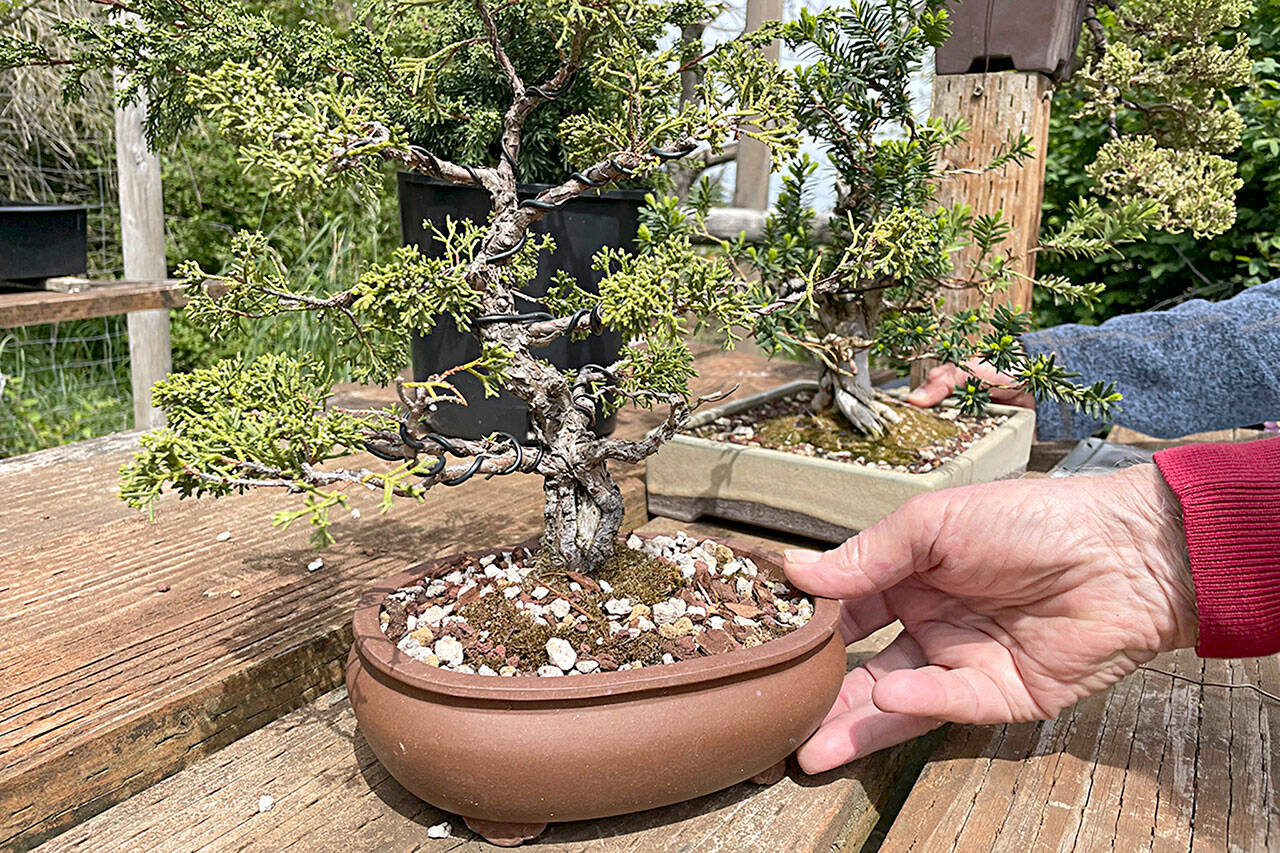The world may have been on hold during the pandemic, but local bonsai enthusiasts remained astute — and ready for a return.
Members of the Dungeness Bonsai Society kept watering, trimming and caring for their trees as many have for decades. They continue to grow interest in the hobby at their free 45th-annual show, from 10 a.m.-5 p.m. Saturday, June 3, at Pioneer Memorial Park’s clubhouse, 387 E. Washington St.
Seventy-plus trees of many types and sizes will be on display, club member Ron Quigley said.
Quigley and others encourage membership to help people with bonsai of their own, as many of the 30 club members are novices.
Bonsai, pronounced “bone-sigh,” is when a tree is placed in a pot and manipulated to various shapes and sizes.
Club member Evan Miller said the pieces are “all about scale and presenting an image of age.”
This is accomplished many ways, club members said, such as exposing the surface roots (Nebari) and wiring the tree’s branches to space them out and/ or maneuver them.
Fellow club member Clint Cummins said wiring a tree’s branches can give light to different parts particularly to one with dense foliage. For one of Quigley’s trees, he used wiring to create a more confined look bringing the branch and foliage back over its Nebari.
Club members hold a wealth of information about bonsai and have worked with and learned from experts, including the late-bonsai artist John Naka.
Cummins said Naka is the grandfather of American bonsai, and his methods helped open up styles across the country and globe.
“Bonsai is a process,” Cummins said. “There are certain things you do throughout the year,” he said, such as fertilizing, repotting and pruning.
When starting out with bonsai, club members said junipers are the best for their sturdiness in this climate.
While not a bonsai, Cummins said, he still has his original tree from 1970 that helped start his bonsai journey. He spotted a silver maple in his lawn while living in Fresno, Calif.
“I put some dirt in a coffee can, which it loved, and it grew,” he said. “I thought, ‘bet I could do this with other trees.’”
A few years passed and he figured his passion could be bonsai trees, so he bought some books and “one of them lit a fire in me,” Cummins said.
Quigley has downsized in recent years, but one of his trees came from a neighbor in 2012 that was purchased from a retail store with rocks glued above its roots. It had to be watered from underneath until Quigley transferred it to a new container, pinched off some of the new growth, and it thrived outside his home.
Miller said he’s been growing bonsai for 33 years, and it’s “something that gives back if you keep it happy.”
The club meets at 10 a.m. the first Tuesday each month at Pioneer Memorial Park’s clubhouse, 387 E. Washington St. It was formally organized on Nov. 2, 1976.
For more information, visit dungenessbonsai.wordpress.com.
Dungeness Bonsai Society Bonsai Show
When: 10 a.m. Saturday, June 3
Where: Pioneer Memorial Park’s clubhouse, 387 E. Washington St.
Featuring: 70-plus trees on display; pictures allowed


